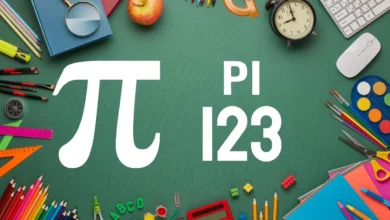Understanding UGA ELC: A Comprehensive Guide

The University of Georgia’s eLearning Commons (UGA ELC) is a robust platform designed to streamline online learning and enhance educational experiences for students and instructors. As the primary Learning Management System (LMS) used by UGA, ELC provides a centralized space for course materials, assessments, and collaborative tools, making it an essential part of the university’s academic ecosystem. In this article, we will explore the features, benefits, and best practices of UGA ELC while addressing common challenges and offering tips for effective usage.
What is UGA ELC?
UGA ELC, also known as eLearning Commons, is a digital learning environment that serves the University of Georgia’s students and faculty. Powered by D2L Brightspace, it facilitates a seamless integration of teaching resources, interactive tools, and administrative functions. ELC supports diverse learning modalities, from fully online courses to hybrid and traditional classroom settings.
Core Functions of UGA ELC:
- Content Delivery: Provides access to lecture notes, presentations, and multimedia resources.
- Assessment Tools: Enables online quizzes, exams, and assignment submissions.
- Communication: Features discussion boards, announcements, and email tools.
- Grade Management: Offers a transparent grading system for instructors and students.
Key Features of UGA ELC
1. Intuitive User Interface
The platform is designed with user-friendliness in mind, ensuring students and faculty can navigate easily. A customizable dashboard provides quick access to courses, notifications, and tasks.
2. Collaborative Tools
UGA ELC fosters engagement through tools like discussion forums, group projects, and peer reviews. These features promote active learning and communication within courses.
3. Mobile Accessibility
ELC is fully compatible with mobile devices, allowing students and instructors to access content and tools on the go. The Brightspace Pulse app further enhances mobile usability by providing real-time notifications and updates.
4. Multimedia Integration
Instructors can embed videos, podcasts, and interactive media to create dynamic learning experiences. This multimedia capability caters to various learning styles, ensuring content resonates with all students.
5. Analytics and Reporting
The platform’s robust analytics tools provide insights into student engagement and performance, helping instructors tailor their teaching strategies.
Benefits of Using UGA ELC
For Students:
- Centralized Learning Hub: Access all course materials, grades, and communication tools in one place.
- Flexible Learning: Study at your own pace, review past materials, and participate in asynchronous discussions.
- Improved Organization: Keep track of assignments, deadlines, and course updates effortlessly.
For Instructors:
- Efficient Course Management: Streamline administrative tasks like grading, attendance, and content delivery.
- Enhanced Engagement: Use interactive tools to foster active participation.
- Performance Monitoring: Gain valuable insights into student progress and adapt teaching methods accordingly.
Common Challenges and Solutions
While UGA ELC offers many benefits, some users face challenges related to technology and usability. Here are common issues and practical solutions:
1. Technical Glitches
Issue: Occasional system downtime or slow loading speeds can disrupt learning. Solution: Regularly check system updates and use reliable internet connections. The UGA EITS Help Desk is available for troubleshooting.
2. Learning Curve
Issue: New users may find the platform overwhelming. Solution: UGA offers comprehensive tutorials and guides. Both students and instructors can benefit from these resources to familiarize themselves with ELC features.
3. Limited Interaction
Issue: Online courses may lack the personal touch of in-person learning. Solution: Instructors can leverage video conferencing tools, personalized feedback, and interactive activities to build a sense of community.
Best Practices for UGA ELC
For Students:
- Stay Organized: Regularly check the dashboard for updates and deadlines.
- Engage Actively: Participate in discussion boards and group activities to maximize learning.
- Leverage Resources: Use the mobile app and multimedia content for flexible, on-the-go learning.
For Instructors:
- Simplify Navigation: Use clear labels and organized folders for course materials.
- Incorporate Multimedia: Engage students with videos, infographics, and interactive tools.
- Communicate Regularly: Post announcements and provide timely feedback to maintain student engagement.
Future of UGA ELC
As technology evolves, so does UGA ELC. Future updates are expected to include:
- Artificial Intelligence Integration: AI-driven tools for personalized learning paths and automated grading.
- Enhanced Accessibility: Improved support for students with disabilities.
- Advanced Analytics: More detailed insights into student behavior and course effectiveness.
Conclusion
UGA ELC is an indispensable resource for both students and instructors at the University of Georgia. Its comprehensive features and user-friendly design make it a powerful tool for modern education. By addressing common challenges and adopting best practices, users can maximize the platform’s potential. As the UGA ELC continues to evolve, it promises to redefine the learning experience for the better.

